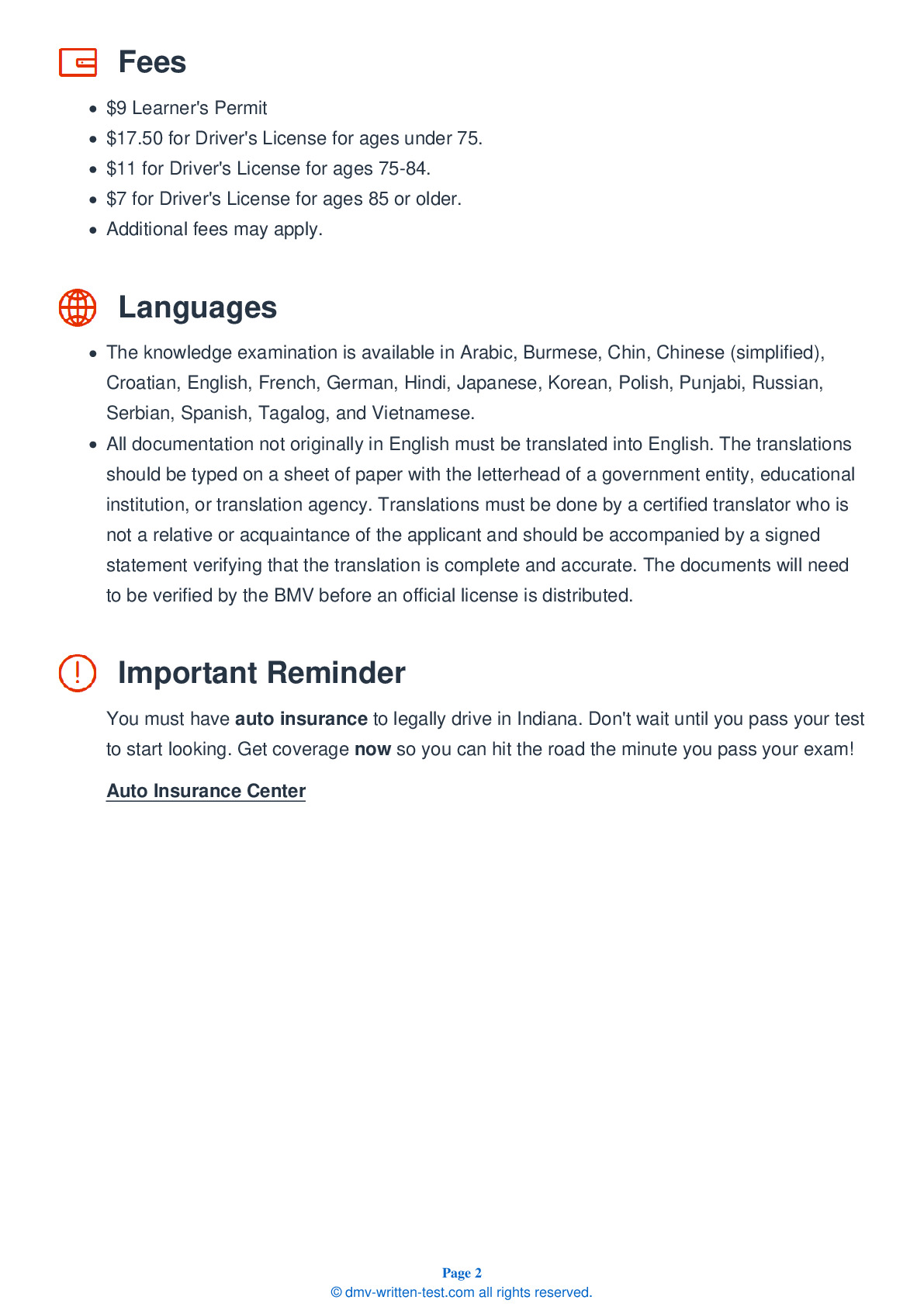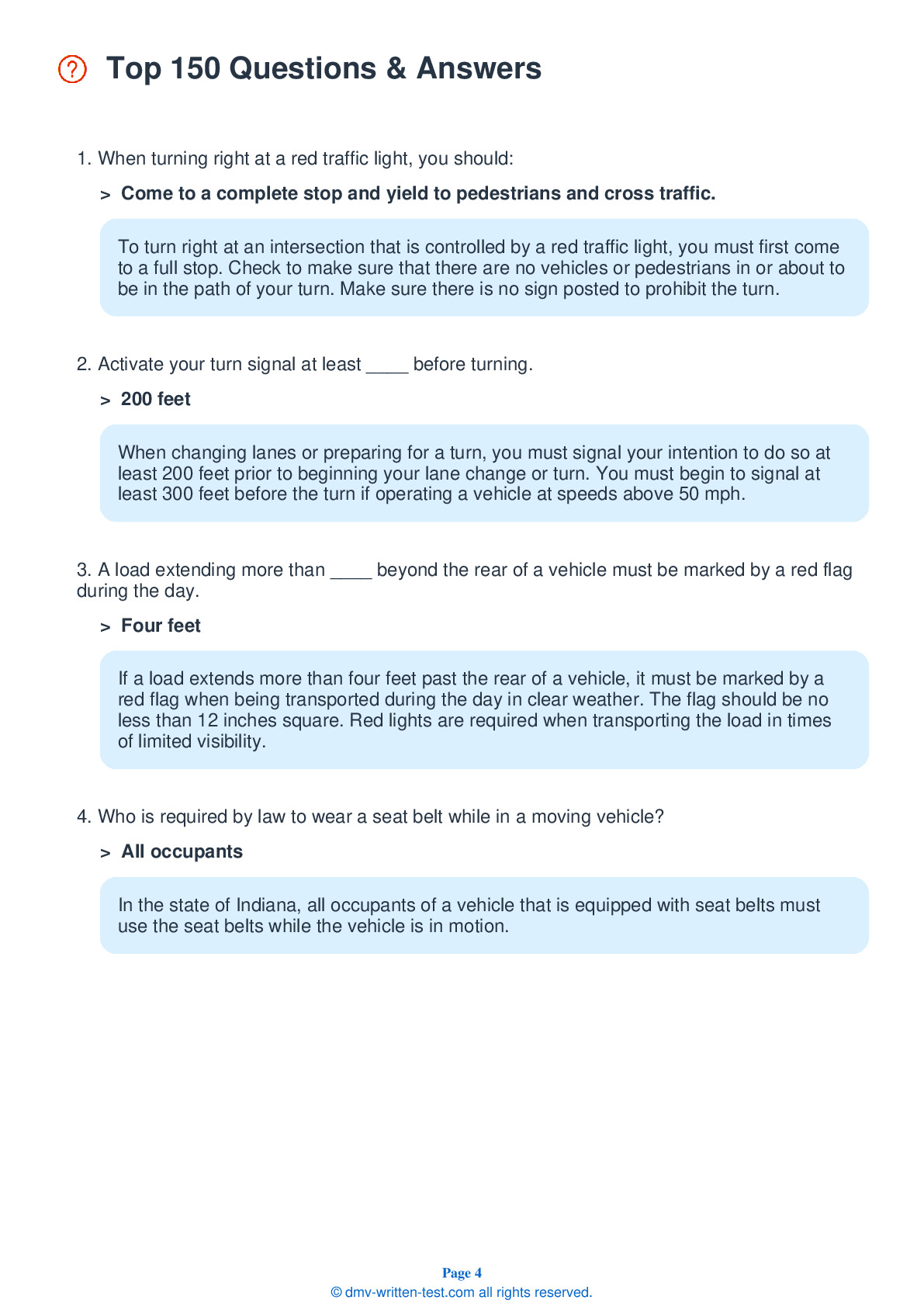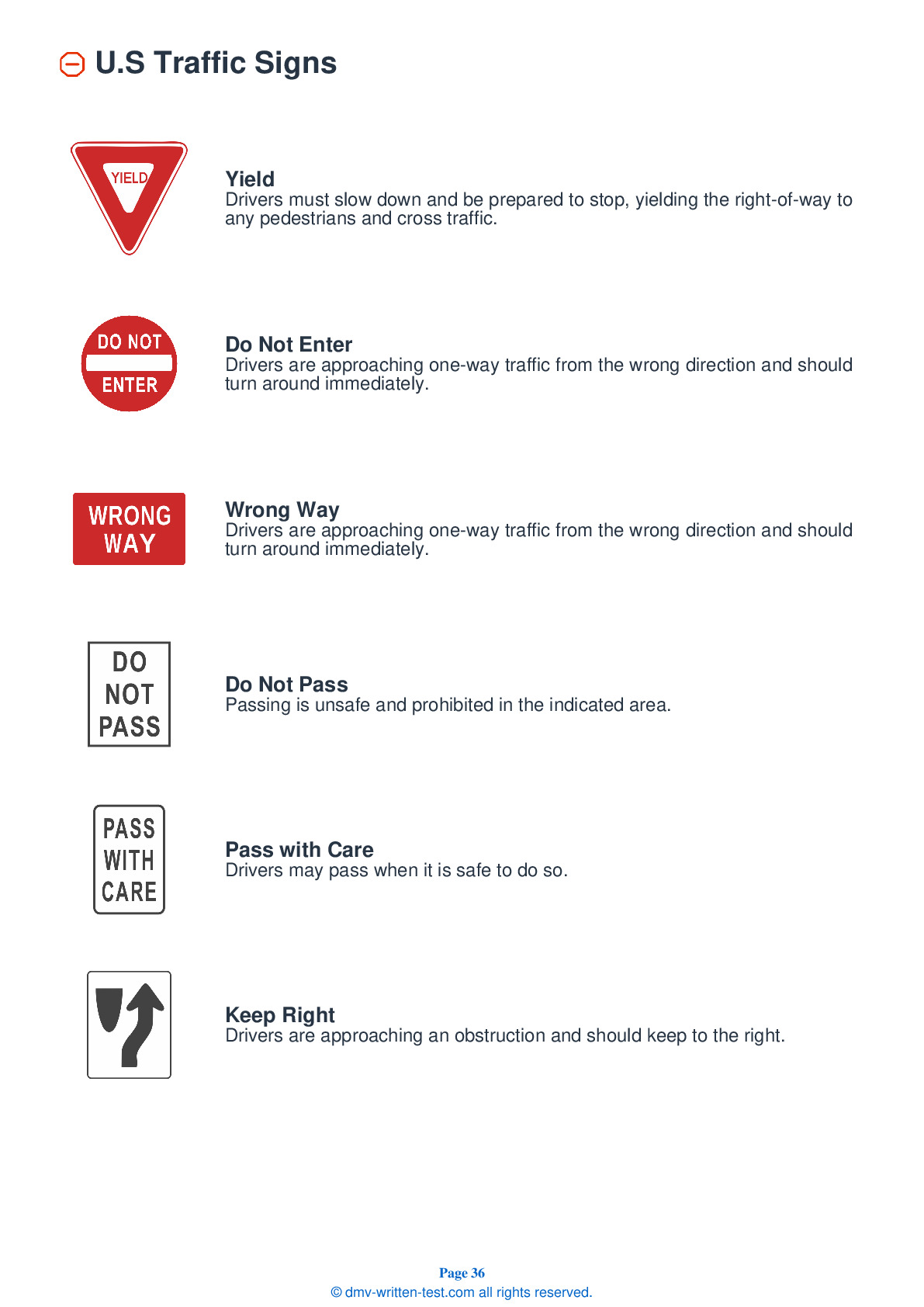2025 Indiana Permit Test 12
The following questions are from real DMV written tests. These are some of the actual permit questions you will face in Indiana. Each permit practice test question has three answer choices. Select one answer for each question and select "grade this section." You can find this button at the bottom of the drivers license quiz. For a complete list of questions and answers for Indiana please visit https://cheat-sheets.dmv-written-test.com/en/indiana/car.
Number of Tests
Number of Question
Passing Score
17. At night, it is hardest to see:
Explanation
Compared to signs and other roadside objects, pedestrians are hardest to see at night.
18. You may pass another vehicle if the line dividing your lane from the lane you wish to enter is a ____ line.
Explanation
White lines separate traffic lanes traveling in the same direction. You may cross broken white lines to pass, as long as the passing lane is clear.
19. This sign means that:

Explanation
This sign indicates that workers may be on or very close to the roadway ahead, so you should take special care when traveling through the area.
20. You experience an incident at work that has left you feeling angry. When you get to your car, you should:
Explanation
Persons who are upset, angry, or otherwise distracted by their emotions should take time to cool off before driving a car. Taking out frustrations or anger while driving is exercising very poor judgment and is very dangerous to both the driver and others on the road.
21. If you see this sign, you:

Explanation
Regulatory signs are white, rectangular signs with black markings. Drivers must obey the instructions posted on all regulatory signs. Where this sign is posted, it is prohibited for drivers to pass one another.
22. Your blind spot is the area of the road:
Explanation
Blind spots are areas that a driver cannot see without moving their head. They can be located to the sides of and behind a vehicle.
23. This road sign means:

Explanation
These signs indicate that the road curves to the right ahead and that drivers should slow down to the safe speed indicated (in this case, 35 mph).
24. If an oncoming driver is heading toward you in your lane, you should:
Explanation
If another vehicle is approaching you head-on in your lane, you should first honk your horn to attract attention. If the other driver does not move over, try to escape to the right. If you swerve left and the other driver corrects at the last instant, you will still crash. If a collision is unavoidable, brake firmly and steadily. Every mile per hour you slow down will reduce the impact.
25. If a green arrow turns into a solid green light, you:
Explanation
If a green arrow turns into a solid green light, you may still turn in the direction that the arrow was pointing but you must first yield to pedestrians and oncoming traffic.
26. When riding in a vehicle, small children:
Explanation
Special child seats are available for children who are too small to wear regular safety belts. No person is strong enough to safely hold onto a child of any size during an accident or sudden stop. Never allow a child to ride in a vehicle unless they are properly fastened into a seat.
27. Night driving can be more difficult than driving during the day because:
Explanation




